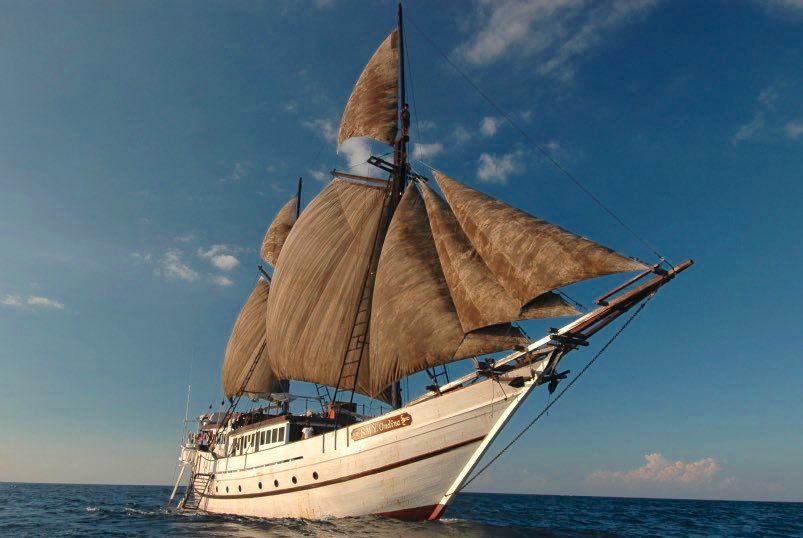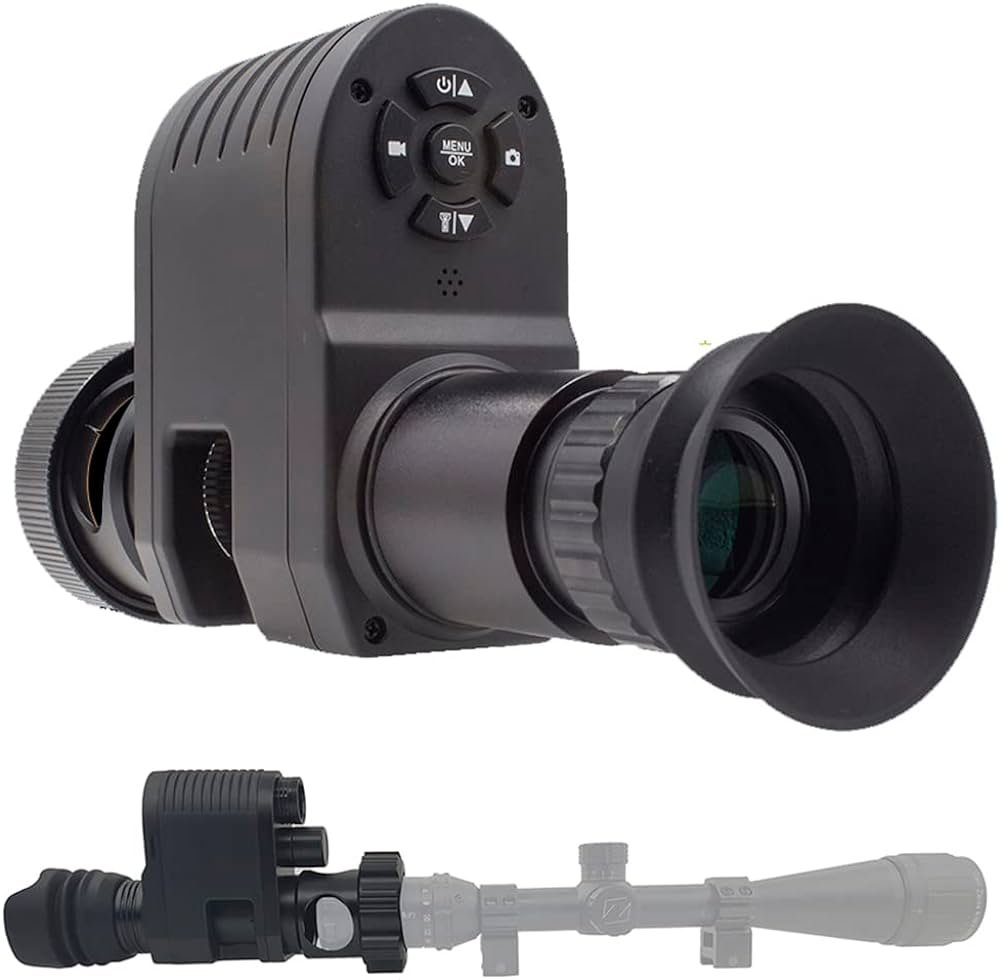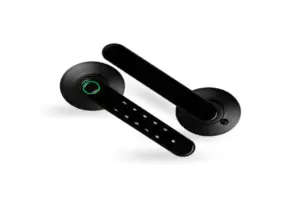Marine night vision camera,s enhance safety by providing clear visuals in low-light conditions at sea. These devices are essential for nocturnal navigation and surveillance.
In the vast and unpredictable marine environment, nighttime visibility is critical for safe navigation and security. Marine night vision cameras utilize infrared technology or thermal imaging to capture clear images regardless of the lighting conditions. Suitable for marine vessels of all sizes, from small boats to large ships, these cameras help mariners avoid obstacles, identify other vessels, and spot potential hazards in the water during the night.
The integration of such technology is vital for ensuring round-the-clock operational safety, making it a highly sought-after tool for both commercial and recreational seafarers. As technology advances, more compact and powerful options become available, making marine night vision cameras an indispensable part of modern maritime operations.
The Importance Of Marine Night Vision Cameras
Marine night vision cameras have become an indispensable tool for mariners, transforming the art of navigation and safety at sea during the night. As the sun dips below the horizon, these high-tech devices contribute to a seamless transition from daylight to dark, maintaining optimum situational awareness even in the absence of natural light. They play a critical role in ensuring that activities such as fishing, patrolling, or recreational boating can continue safely after dusk.
Advantages Of Night Vision Technology In Marine Navigation
- Extended vision: Night vision cameras allow sailors to see beyond the limited range of standard marine lighting, expanding the visible horizon.
- Collision avoidance: By allowing the detection of obstacles, buoys, and other vessels at night, these cameras significantly reduce collision risks.
- Navigation ease: Identifying coastal features and navigational markers is greatly simplified, helping to ensure a safe passage.
- Diverse conditions adaptability: These cameras excel in a variety of lighting conditions including low-light, fog, and even complete darkness.
Enhanced Safety And Situational Awareness During Nocturnal Sailing
The strategic deployment of a marine night vision camera becomes a force multiplier for enhanced safety and situational awareness aboard any vessel. Crew members gain the advantage of:
| Safety Aspect | Contribution of Night Vision |
|---|---|
| Man-overboard situations | Swift detection and response, even in pitch-dark conditions. |
| Search and rescue | Efficient location of individuals or vessels in distress at night. |
| Mooring and docking | Increased accuracy and security during nighttime docking maneuvers. |
Squadrons of leisure and commercial mariners testify to the unparalleled benefits of night vision technology, affirming that with the appropriate marine night vision camera, exploring the waters after sunset is not merely a possibility, but a testament to modern marine innovation.
Understanding Marine Night Vision Cameras
Sailing at night presents unique challenges, chief among them being visibility. Marine night vision cameras open up a new world of navigation and safety, allowing sailors to see beyond the limitations of the human eye. Whether skimming across calm waters or steering through a turbulent sea, these devices help to enhance nocturnal maritime activities with advanced technological support.
How Night Vision Cameras Work
Night vision cameras operate by amplifying existing light—such as moonlight, starlight, or ambient artificial light—to render a clear image even in low-light conditions. They use specific sensors, including CCD or CMOS, to capture infrared light or thermal radiation, translating it into a visible image. This process, known as image intensification or thermal imaging, is critical to distinguish objects in near or complete darkness.
Different Types Of Marine Night Vision Cameras
Several types of night vision cameras cater to a variety of sailing needs:
- Infrared (IR) Cameras – Use IR LED lights to illuminate areas directly in front of the camera, suited for short-range observation.
- Thermal Imaging Cameras – Detect heat signatures from boats, buoys, and living beings, useful for long-range detection.
- Low-Light Cameras – Enhance available light and are perfect for areas with some lighting like harbors or near shorelines.
- Hybrid Systems – Combine technologies, such as IR and thermal imaging, for comprehensive coverage.
Each type serves a distinct purpose, making it important to match the camera system with the specific needs of your maritime journey.
Key Features And Specifications To Consider When Choosing A Night Vision Camera For Sailing
For optimal performance, consider the following key features:
| Feature | Importance |
|---|---|
| Resolution | Defines the image clarity, particularly important for identifying objects at sea. |
| Range | The maximum distance at which the camera can detect objects in the dark. |
| Field of View | The observable area, wider angles help monitor a larger expanse of water. |
| Durability | Cameras should withstand harsh marine environments, including water and salt resistance. |
| Image Stabilization | Minimizes blurriness in rough waters or when the boat is in motion. |
Additionally, factors like ease of installation, compatibility with on-board equipment, and warranty should influence your decision. Opting for high-resolution cameras with substantial night range capabilities and robust construction suited for the marine environment will ensure you invest in a night vision system that stands the test of time and tide.
Installing And Using Marine Night Vision Cameras
Marine Night Vision Cameras have revolutionized safety and navigation for nocturnal marine activities. The ability to pierce the darkness and visualize the surroundings in low-light conditions is indispensable. Whether you’re guiding a vessel through busy harbors, keeping watch on open waters, or monitoring a secured perimeter, installing and using the right night vision technology ensures that seafarers can operate more confidently and securely after sunset.
Installation Process And Best Practices
Embarking on the installation of a marine night vision camera begins with selecting the optimal location. This strategic placement is crucial for maximizing visibility and functionality. Look for an unobstructed area that provides a wide viewing angle.
- Review your vessel’s layout: Identify possible mounting spots and assess the wiring path to ensure a secure and safe installation.
- Gather your tools: Collect necessary equipment, including mounting brackets, drill, screws, marine-grade sealant, and wiring supplies.
- Mounting the camera: Attach the camera using the brackets, ensuring it’s both level and firmly secured to withstand the harsh marine environment.
- Connect the power source: Ensure your wiring is neat, secure, and follows your vessel’s electrical standards to prevent any shorts or electrical hazards.
- Test your setup: Before finalizing the installation, power on the camera to check the field of vision and adjust the orientation if necessary.
Tips For Effectively Using Night Vision Cameras On A Boat
Utilizing a night vision camera system extends beyond mere installation. Adequate knowledge of its operation can profoundly affect its efficacy.
- Understand the controls: Familiarize yourself with the camera settings to adeptly adjust to different night time conditions.
- Regular checks: Conduct pre-trip inspections to confirm that the camera is operational and settings are optimized for the expected conditions.
- Nautical awareness: Use the camera in tandem with other navigational tools like radar and AIS to complement the visual information provided.
- Record and review: If your system allows, recording footage can be invaluable for incident review or to refine navigational practices.
Maintenance And Care For Marine Night Vision Cameras
Regular maintenance guarantees the longevity and reliability of your marine night vision camera.
| Action | Frequency | Notes |
|---|---|---|
| Clean the lens | After each voyage | Use a soft, clean cloth to avoid scratches. |
| Inspect the housing | Bi-annually | Check for corrosion or wear. |
| Test the functionality | Monthly | Ensure settings and features perform as expected. |
| Verify connections | Annually | Tighten any loose cables and inspect for fraying or damage. |
Staying attentive to these maintenance tasks will ensure that your maritime journeys, regardless of the hour, are as safe and uneventful as those made during the day.
Comparing Top Marine Night Vision Camera Brands
When venturing out into open waters, safety and visibility are paramount, especially during the night. This has given rise to a specialized market for Marine Night Vision Cameras, aimed at enhancing nocturnal navigation experiences. In this section, we delve into a comprehensive survey of the leading brands, dissecting the popular models and their assorted features. We aim to guide seafarers in determining which night vision camera will best suit their marine excursions.
Review of leading night vision camera manufacturersReview Of Leading Night Vision Camera Manufacturers
- FLIR – As pioneers in thermal imaging, FLIR offers a range of cameras that excel in thermal detection and imaging to improve safety and awareness on the water, both day and night.
- Raymarine – Known for integrating state-of-the-art technologies, Raymarine’s night vision devices are designed for seamless integration with other onboard systems.
- Garmin – With its legacy in GPS technology, Garmin extends its expertise to marine night vision cameras that are robust, reliable, and user-friendly.
- OceanView – OceanView cameras specialize in providing crystal-clear images in complete darkness, enhancing the captain’s perception of the maritime environment.
- SiOnyx – SiOnyx stands out for its Aurora cameras that capture color night vision, drastically improving visibility for recreational and professional use.
Comparison Of Popular Models And Their Features
| Brand | Model | Key Features | Resolution | Field of View |
|---|---|---|---|---|
| FLIR | M-Series | High-resolution thermal imaging, gyro-stabilization | 640 x 480 | 24° × 19° |
| Raymarine | AX8 | Thermal detection, Wi-Fi connectivity, integration with MFDs | 640 x 480 | 48° |
| Garmin | GC 100 | Wireless streaming, day and night modes | 1024 x 768 | 53° |
| OceanView | Apollo II | Dual payload thermal, low light camera, pan, tilt and zoom | 320 x 240 | 36° |
| SiOnyx | Aurora | Color night vision, water-resistant, wireless streaming | 1280 x 720 | 44° |
Factors To Consider When Selecting The Best Night Vision Camera For Sailing
- Image Quality – Quantum of the resolution and clarity at various distances.
- Stabilization Features – Key to maintaining image steadiness in rough waters.
- Integration Capabilities – Compatibility with existing vessel instruments.
- Field of View – Range of surveillance required for optimal coverage.
- Durability – Equipments resilience to withstand marine conditions.
- Technology Type – Differentiation between infrared, thermal, and low-light imaging.
- Usability – Ease of use and installation procedures.
Maximizing Nocturnal Sailing With Marine Night Vision Cameras
Navigating the vastness of the sea under the cloak of nightfall presents a unique set of challenges for mariners. Marine night vision cameras have emerged as a game-changing tool, offering the ability to see beyond the darkness. These sophisticated devices amplify available light, providing clarity and enhancing safety during nocturnal journeys. Whether you’re a seasoned sailor or embarking on your maiden nocturnal voyage, embracing these technological marvels can transform your nighttime navigation experiences.
- Understand your environment: Familiarize yourself with the typical maritime conditions during nighttime, including potential hazards.
- Optimize camera settings: Adjust the contrast and brightness levels on your marine night vision camera for the best view.
- Regularly check your equipment: Ensure your camera is functioning optimally before setting sail. Routine maintenance is vital for reliable performance.
Enhanced Safety on Open Waters: Numerous sailors have shared anecdotes about how night vision technology prevented potential collisions with unseen obstacles and guided them safely through treacherous waters.
Success in Search and Rescue Operations: Marine night vision cameras are invaluable in search and rescue missions, enabling crews to locate individuals even in pitch-black conditions, significantly increasing the chances of a successful rescue.
The horizon for marine night vision technology looks brighter than ever. Anticipated advancements include higher resolution imaging, improved low-light performance, and the integration of thermal imaging. As this field progresses, expect to see more compact, energy-efficient, and powerful cameras that promise to further revolutionize nocturnal sailing experiences.

Credit: premierliveaboarddiving.com
Frequently Asked Questions Of Marine Night Vision Camera
What Is The Difference Between Infrared Camera And Night Vision?
Infrared cameras detect thermal radiation, providing images based on heat signatures. Night vision amplifies available light to create a visible image even in low-light conditions.
Is Flir Better Than Night Vision?
FLIR, or thermal imaging, differs from night vision; it detects heat rather than amplifying light. Each has strengths depending on conditions and usage; FLIR excels in total darkness and obscured environments, while night vision requires some ambient light but offers more detailed images.
What Is A Flir Camera On A Boat?
A FLIR camera on a boat is a thermal imaging device used for night navigation and identifying objects in low visibility conditions. It detects heat signatures, aiding in safety and security measures on the water.
What Camera Can I Use To See In Total Darkness?
To see in complete darkness, use an infrared (IR) camera or a thermal imaging camera, as both can capture images without visible light.
Conclusion
Ensuring safety and clarity at sea is paramount. Marine night vision cameras offer unmatched nocturnal visibility for boaters. Embrace the night with confidence. Upgrade your nautical journeys. Seize the transformative power of night vision technology aboard your vessel. Navigate the dark waters, effortlessly.






